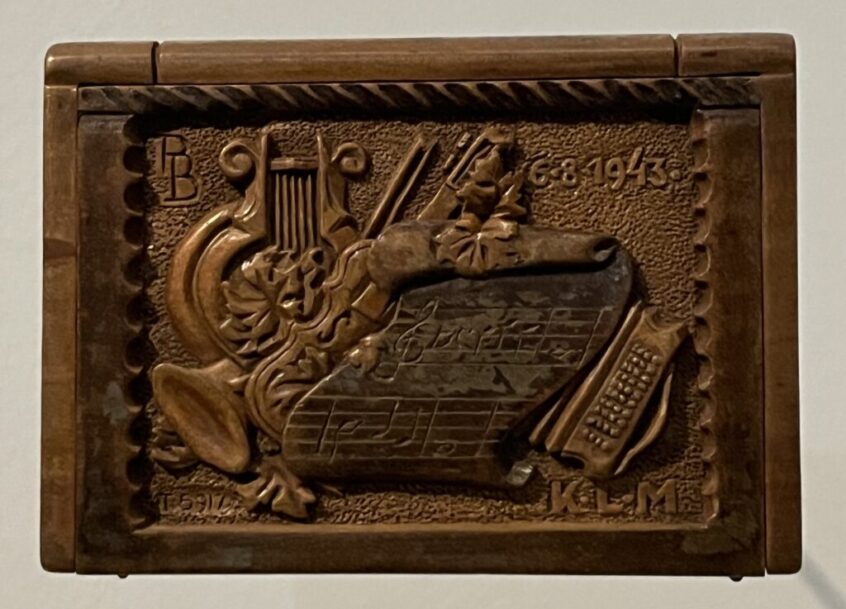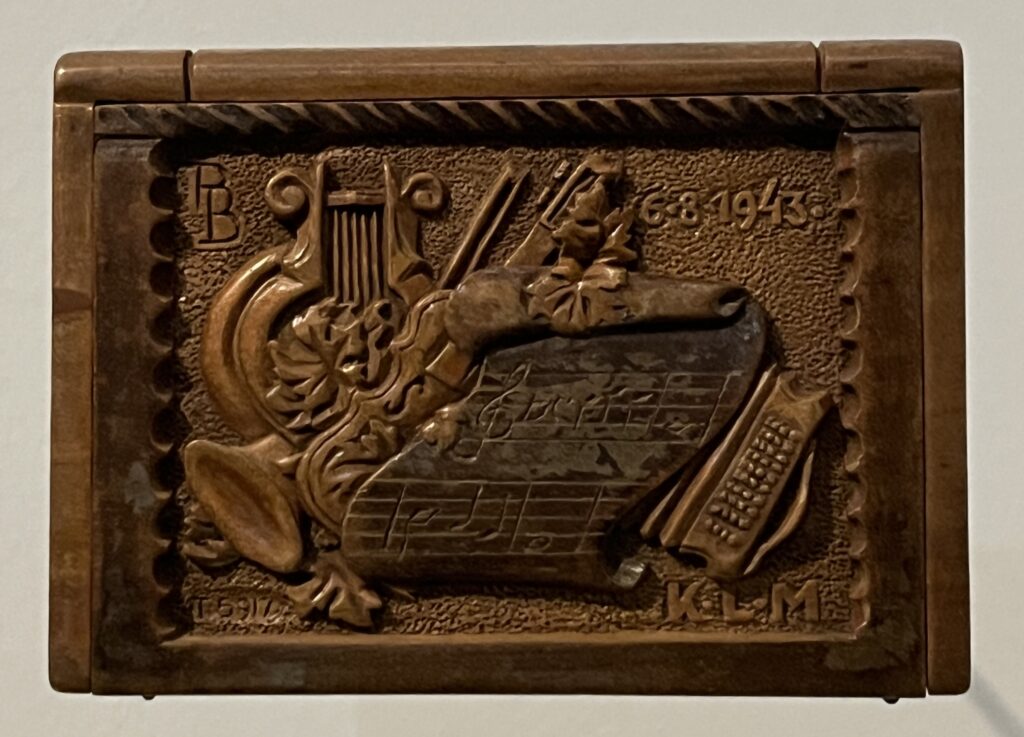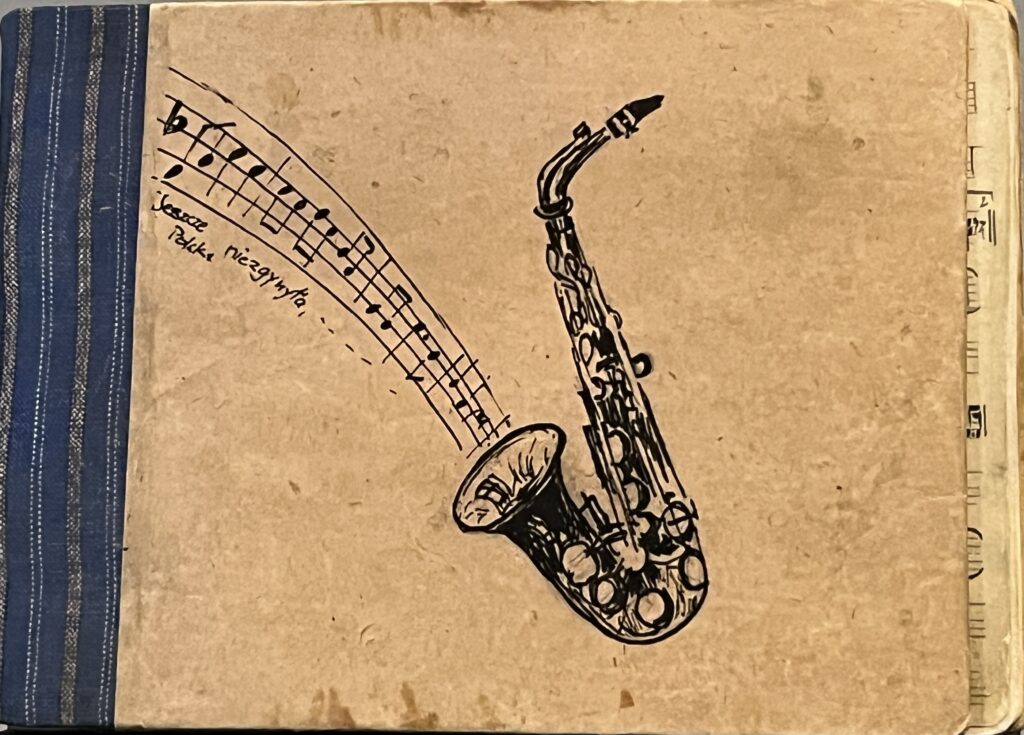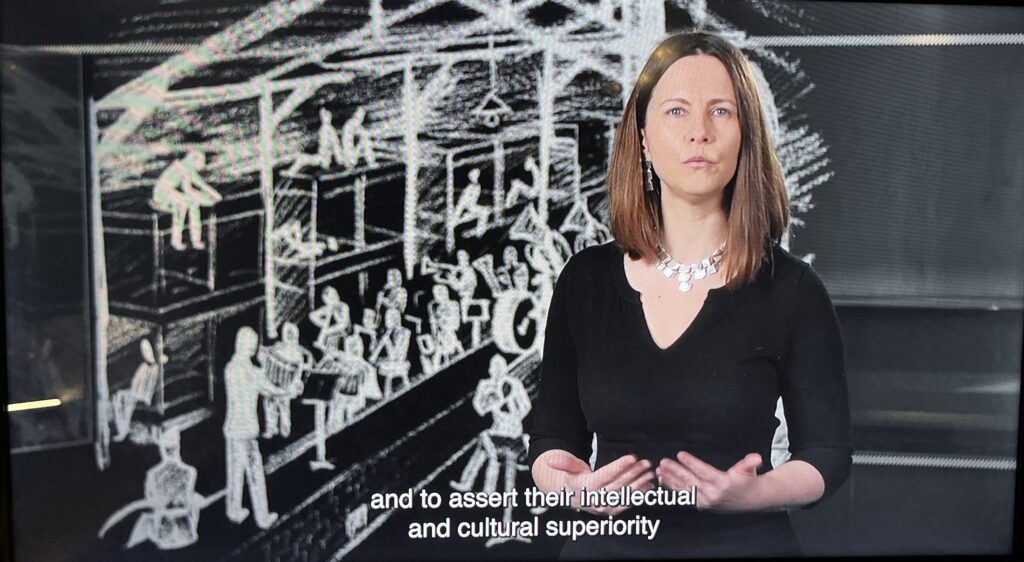Music in nazis camps was instrumental in many ways and this small exhibition at Memorial de la Shoah, in the Marais, tells its story and is incredibly moving. To see musical instruments manufactured in the camps and surviving scores makes you shiver. “The marches of popular songs …lie engraved in our minds and will be the last thing in the Lager that we shall forget: they are the voice of the Lager, the perceptible expression of its geometrical madness, of the resolution of others to annihilate us first as men in order to kill us more slowly afterwards” wrote Primo Levi in “This is a Man” in 1947. The sounds of music resonated daily through Nazi Concentration camps and French transit camps and played as accompaniment to wide variety of circumstances. This exhibition presents a panorama of the uses of music in all camps (including French transit camps) and ends with Terezinstadt’s camp-ghetto.
Most of the instruments had been brought by the musicians when they first arrived, others were sent by the families, like the bandoneon sent to Alfred Rusche, a communist prisoner, in Sachsenhausen. These were particularly popular at the time. Some in Buchenwald were ordered by the commandant of the camp and paid for by the Jewish prisoners money or valuables. The bills for the order were kept and are frightening. There, musicians wore a special navy blue uniform with red pants and leather boots, when they performed. They were borrowed in 1941 from the Yugoslav Royal Guards, for which they had been made in 1924, and they were quite ridiculous but provided a nice protection against the cold. Their talent did not prevent them form working all day like the other prisoners.
Since 1933, the orchestras made exclusively of prisoners were expected to promote group cohesion and to set the pace for duties. From 1938 onwards they grew from small ensemble to full-scale symphony orchestras. In Auschwitz it numbered 120 musician sin 1944. The orchestra set the pace for everyday moment of the day, the departure to and the return from work, the roll call of the prisoners, but also the executions. A remarkable film shows musicologist Elise Petit explaining her research on the topic at the University of Grenoble.
If a Christian holiday fell on a Sunday, a nonworking day, it would give rise to large-scale concerts in the barracks dedicated to cultural activities. Singing predominated, accompanied by one or two instruments. Everyone would perform traditional melodies celebrating their country popular songs and also compositions written for the occasion. The celebration of Jewish holidays were forbidden. In Theresienstadt, near Prague, musical life was particularly rich because of he prominent Jewish celebrities detained there. The camp was designed as a showcase of the regime which organised three visits from the Red Cross and made a propaganda documentary.
Memorial de la Shoah until February 25. Closed on Saturdays.
Share this Post





One Comment on “At Memorial de la Shoah, music is the new theme”
I just discovered your blog and immediately subscribed. It is a treasure trove of information about a city I adore.